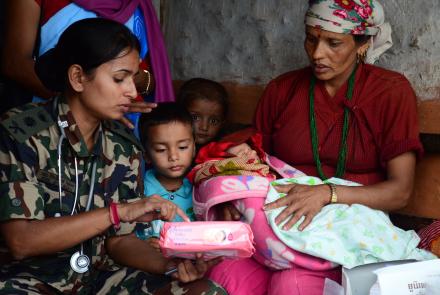
Image by US Pacific Air Forces on Flickr.
Health policy failing Asia
Health policy in Asia and the Pacific is failing to keep up with the complexities of the issues faced by the region and its people, according to a new Asia and the Pacific Policy Studies paper.
Professor Kelley Lee of Simon Fraser University, Canada, says that if the region is to cope with the kinds of health challenges it’s facing, we need to break down policy silos that artificially separate how we think about the world’s health needs.
“We need to see public policy in a more interconnected and systemic way given the complexity of the issues we face in today’s increasingly globalised world,” she said.
“Policy, including health policy, needs to be much more holistic by engaging across other policy communities. This means making policy in a very different, more collective, way across the many institutional boundaries that we’ve created around us.
“How can we strengthen the quality of policy debates? By thinking beyond these disciplinary and sectoral silos, and joining up how we respond to complex issues such as disease trends, climate change and global economic crises.”
Lee says that while all forms of public policy face challenges of complexity, health policy is particularly struggling to tackle big regional problems.
“In health policy, we’ve become so specialised that we find it difficult to look at the bigger picture. We either do not recognise, or do not know what to do about, how economic trends, environmental change and political transitions impact on health. Nor do we communicate well enough how health impacts on economic, environmental and political challenges.
“This is especially evident in the Asia-Pacific region where people’s health is being affected by large-scale and rapid changes. Health policy in the region is being tasked with responding to the rapid transition taking place. At the same time, how effectively health needs are addressed will have profound implications for the sustainability of the region’s achievements.”
Lee added that a more integrated approach will also require challenging the traditional geographical separation of developed and developing countries.
“I understand why this categorisation persists - there are, of course, stark inequalities in the world and we should be working to address them. So this is not to ignore that there are ‘haves’ and have nots’. But these inequalities no longer fit geographically into ‘developed’ and ‘developing’ countries.
“The geography of global health is far more complex because of the ‘deterritorialisation’ of many health determinants, and thus our fates have become more closely intertwined. Global health is not just about health in developing countries. Seeing global health this way creates the tendency to see certain health threats as ‘out there’ coming to threaten us ‘over here’. The Asia-Pacific, for instance, is often portrayed as the source of global health threats, notably pandemics or counterfeit drugs, but rarely as a source of solutions,” Lee said.
“It’s not only an artificial separation, it’s quite unhelpful for finding collective ways of acting to address these problems. Global health becomes a question of aid or charity, rather than of shared responsibility and interest. There needs to be a paradigm shift in the way we define health needs and make health policy. Health policy in the Asia Pacific region is not simply about national policy, nor even regional policy, but a key component of global health policy.”
Lee argues that to support this changing environment we need institutional change.
“We are struggling at present with the transition from international to global health governance. There is recognition that institutions need to adapt and evolve, but few ideas on the end goal,” Lee said.
“There has been a proliferation of global health initiatives but, with the exception perhaps of Japan, most countries in the Asia Pacific region do not meaningfully participate. We do not have a strong Asian presence in many of the institutional processes concerned with global health. In some cases, unless you’re a donor, you don’t get a seat at the table. Or Asian governments somehow do not feel a desire to join initiatives created outside the region. India and China are rapidly becoming aid donors but they have so far preferred bilateral channels. This adds to the fragmentation we already have. Collective action becomes even harder to achieve as a result.”
Lee’s article is published in Asia and the Pacific Policy Studies, a peer-reviewed, multi-disciplinary journal based at Crawford School. It is published online three times a year by Wiley-Blackwell, with all contributions made freely available without restriction.
To read Lee’s article, Health policy in Asia and the Pacific: Navigating local needs and global challenges go to the Asia and the Pacific Policy Studies website: http://onlinelibrary.wiley.com/doi/10.1002/app5.5/full
Updated: 27 July 2024/Responsible Officer: Crawford Engagement/Page Contact: CAP Web Team













